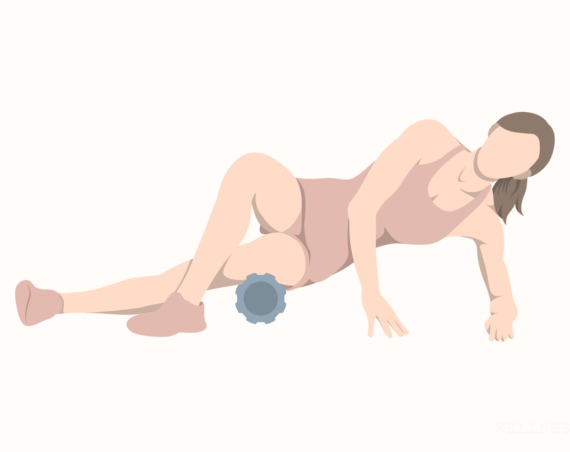
As we age, it can become more challenging to maintain our muscle mass and strength. However, this doesn’t mean that building muscle mass after 50 is impossible.
With the right strategies and approach, it’s possible to increase muscle mass and achieve your fitness goals. In this article, we will explore some proven strategies to build muscle mass after 50 years old.
From adjusting your workout routine to incorporating the right nutrients into your diet, we will cover everything you need to know to start building muscle mass and feeling stronger than ever before.
So, if you’re ready to take your fitness to the next level and achieve your goals, keep reading to discover these effective strategies for building muscle mass after 50.
You’ll also like:
Experts Reveal the Top 5 Exercises That Keep Your Aging Young
The Best Exercises You Should Be Doing To Regain Balance After 50, Trainer Says
Understanding Muscle Mass and Aging

As we age, our bodies undergo numerous changes that can affect our muscle mass and strength. One of the main factors that contribute to muscle loss is a decrease in testosterone levels.
Testosterone is a hormone that plays a vital role in building and maintaining muscle mass, and it naturally declines as we age. Additionally, aging can also lead to a decrease in physical activity, which can further contribute to muscle loss.
However, it’s important to note that muscle loss is not inevitable. With the right strategies and approach, it’s possible to build and maintain muscle mass well into your senior years.
In the following sections, we will explore some effective strategies for building muscle mass after 50.
Importance of Strength Training for Building Muscle Mass
Strength training is one of the most effective ways to build muscle mass, regardless of your age. When you engage in strength training exercises, you create tiny tears in your muscle fibers.
These tears then stimulate the growth of new muscle tissue, leading to an increase in muscle mass over time.
Strength training can take many forms, including weightlifting, resistance band exercises, and bodyweight exercises.
The key is to choose exercises that target all of the major muscle groups, including your chest, back, legs, and arms. Additionally, it’s important to gradually increase the weight or resistance over time to continue challenging your muscles and promoting growth.
Nutrition for Muscle Growth
In addition to strength training, proper nutrition is also essential for building muscle mass after 50. Protein is particularly important for muscle growth, as it provides the building blocks your body needs to create new muscle tissue. Aim to consume at least 0.8 grams of protein per pound of body weight each day.
This means that if you weigh 150 pounds, you should aim to consume at least 120 grams of protein per day.
In addition to protein, it’s also important to consume a variety of fruits and vegetables, whole grains, and healthy fats. These foods provide your body with the vitamins, minerals, and nutrients it needs to support muscle growth and overall health.
Rest and Recovery
Rest and recovery are also essential for building muscle mass after 50. When you engage in strength training exercises, you create tiny tears in your muscle fibers. These tears then need time to heal and repair, which is why it’s important to take rest days in between workouts.
Additionally, getting enough sleep is also important for muscle growth and recovery. During sleep, your body produces hormones that promote muscle growth, so aim to get at least 7-8 hours of sleep each night.
Best Exercises for Building Muscle Mass After 50 Years Old
There are numerous exercises that can help you build muscle mass after 50. Here are some of the best exercises to include in your workout routine:
- Squats: Squats are a compound exercise that targets the muscles in your legs, glutes, and core. They can be performed with bodyweight, dumbbells, or a barbell.
- Push-Ups: Push-ups are a bodyweight exercise that targets your chest, shoulders, and triceps. They can be modified to suit your fitness level, making them accessible for people of all ages.
- Rows: Rows are an excellent exercise for targeting your back muscles, which are often neglected in traditional strength training routines. They can be performed with dumbbells or a resistance band.
- Lunges: Lunges are another great exercise for targeting your leg muscles. They can be performed with bodyweight, dumbbells, or a barbell.
- Planks: Planks are a core exercise that can help improve your overall stability and balance. They can be modified to make them more challenging as you progress.
Sample Workout Plan
Here is a sample workout plan that you can use to build muscle mass after 50:
- Warm-up: 5-10 minutes of light cardio, such as walking or cycling.
- Squats: 3 sets of 10 reps, using dumbbells or a barbell.
- Push-Ups: 3 sets of 10 reps, with a modification if needed.
- Rows: 3 sets of 10 reps, using dumbbells or a resistance band.
- Lunges: 3 sets of 10 reps, using dumbbells or a barbell.
- Planks: Hold for 30 seconds, rest for 30 seconds, and repeat for a total of 3 sets.
- Cool-down: 5-10 minutes of stretching.
Remember to gradually increase the weight or resistance as you progress to continue challenging your muscles and promoting growth.
Tracking Progress and Making Adjustments
Tracking your progress is important for staying motivated and making adjustments to your workout routine as needed. Consider taking measurements of your body, such as your waist circumference and muscle mass, and tracking your strength gains over time.
If you find that you’re not seeing the results you want, consider making adjustments to your workout routine or nutrition plan. You may need to increase the weight or resistance, add more sets or reps to your exercises, or adjust your calorie intake to better support muscle growth.
Common Mistakes to Avoid
When building muscle mass after 50, there are some common mistakes that you should avoid. These include:
- Neglecting your nutrition: Proper nutrition is essential for building muscle mass, so make sure you’re consuming enough protein and other nutrients to support your goals.
- Overtraining: While it’s important to challenge your muscles, overtraining can actually hinder your progress. Make sure you’re taking rest days in between workouts and giving your muscles time to recover.
- Not using the proper form: Using improper form when performing exercises can increase your risk of injury and limit your progress. Make sure you’re using the proper form for all of your exercises, and consider working with a personal trainer if you’re unsure.
- Not tracking your progress: Tracking your progress is essential for staying motivated and making adjustments to your workout routine as needed. Make sure you’re taking measurements and tracking your strength gains over time.
Supplements for Building Muscle Mass After 50 Years Old
While proper nutrition should be your main focus when building muscle mass after 50, there are some supplements that may be helpful as well. These include:
- Whey protein: Whey protein is a popular supplement that can help increase protein intake and support muscle growth.
- Creatine: Creatine is a supplement that can help improve muscle strength and endurance during high-intensity workouts.
- Beta-alanine: Beta-alanine is a supplement that can help improve endurance and reduce muscle fatigue during workouts.
- Fish oil: Fish oil is a supplement that can help reduce inflammation and improve overall health, which may in turn support muscle growth.
Conclusion
Building muscle mass after 50 is possible with the right strategies and approach. By incorporating strength training exercises, proper nutrition, rest and recovery, and tracking your progress, you can achieve your fitness goals and feel stronger than ever before.
Remember to start slowly and gradually increase the weight or resistance over time, and don’t hesitate to ask for help from a personal trainer or fitness professional if needed.
With dedication and consistency, you can build muscle mass and stay fit, healthy, and active well into your senior years.


